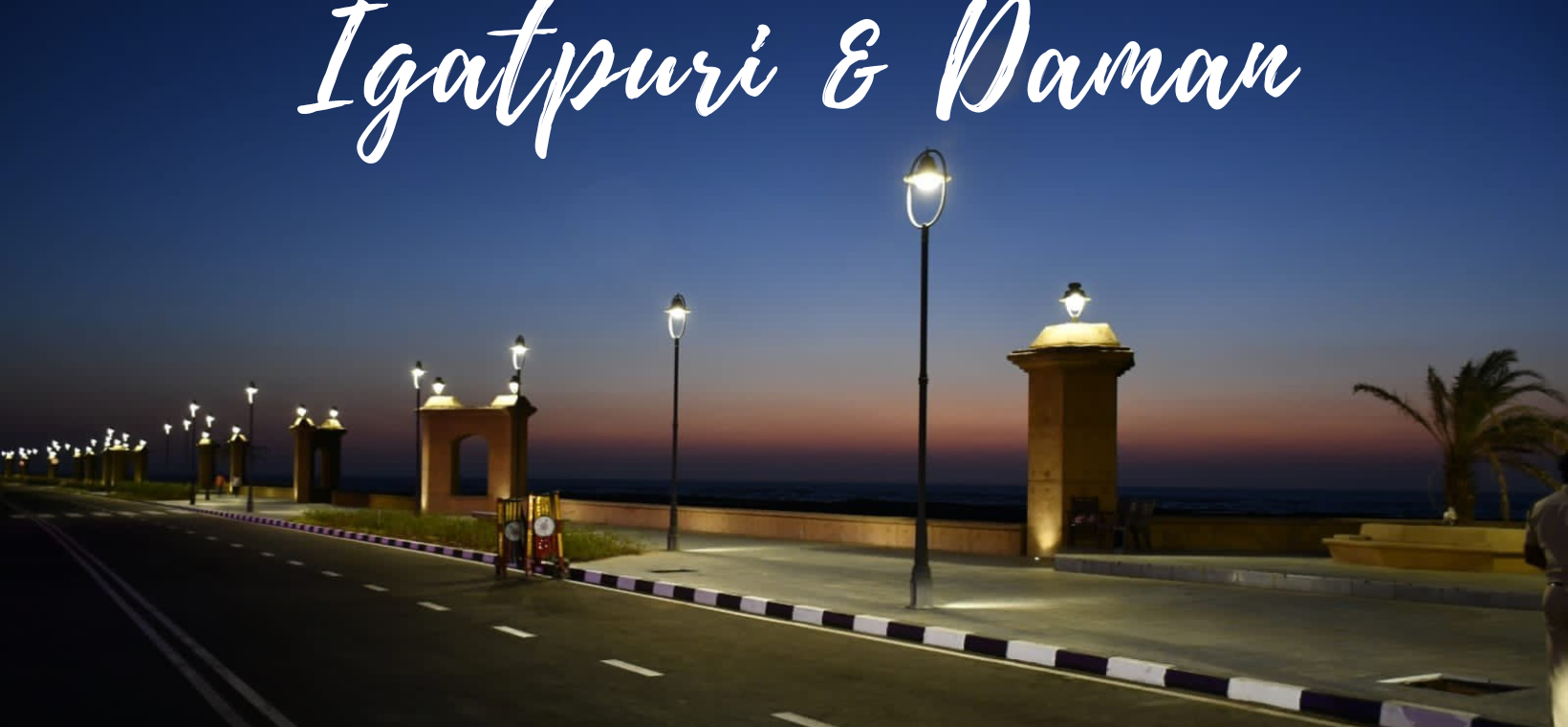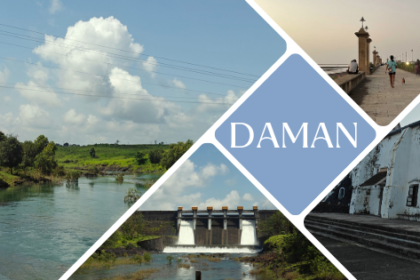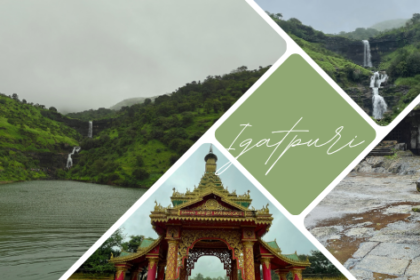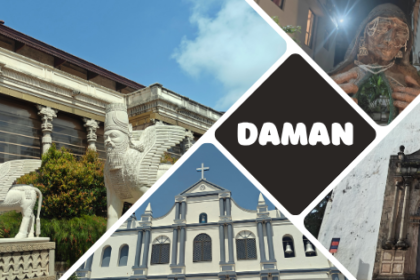Igatpuri and Daman
If there’s one thing I love more than exploring new places, it’s doing so with my husband and our beloved pet dog, Sophie. Our recent trip to Igatpuri and Daman was the perfect blend of adventure, relaxation, and cultural exploration. From the picturesque temples nestled in the Western Ghats to the tranquil beaches of Daman, the trip was a refreshing escape from city life.
| Before lunch | After lunch | |
| Day 1: Pune to Igatpuri | Shri Siddheshwar Temple in Akole | Amruteshwar temple, Umbrella waterfall |
| Day 2: Local sightseeing in Igatpuri | Tringalwadi cave, Myanmar gate | Bhivli waterfalls |
| Day 3: Igatpuri to Daman via Jawhar | Journey from Igatpuri to Jawhar | Moti Daman beach & Fort, Jampore beach road. |
| Day 4: Local sightseeing in Daman | Nani Daman Fort | Udvada parsi town, Arjungad Fort |
| Day 5: Daman to Pune | Journey from Daman to Pune |
Day 1: The Scenic Road to Igatpuri
We set off early Saturday morning, aiming to beat the traffic. Our journey began with a drive through the countryside, stopping at Hotel Shivneri Misal in Manchar for a quick brunch. With a hot cup of tea, we were ready to dive into the day’s adventure. Sophie, of course, enjoyed a few biscuits by our side, tail wagging in excitement.
Our first stop was the serene Siddheshwar Temple in Akole. Located on the banks of the Pravara River in Akole, the remains of Siddheswar temple stand as a remarkable example of the Yadava dynasty’s architectural style. This Temple was buried under thick alluvial deposits due to frequent flooding and was accidentally unearthed in 1780. Over time, the temple suffered significant damage from systematic iconoclasm by Islamic forces, as it was situated along the route between Devgiri Fort in Sambhajinagar and Sinhagad Fort, in Pune.
According to legend, a farmer/ gardener accidentally struck the finial of the temple’s spire while plowing the field. However, it is unlikely that the original finial and spire were intact at the time of this incident. More plausibly, what he actually hit was the roof of the existing structure. The upper portion of the central dome likely sustained damage as well and was later reconstructed during restoration efforts. This was followed by the addition of three gilded pinnacles, which appear somewhat out of place.
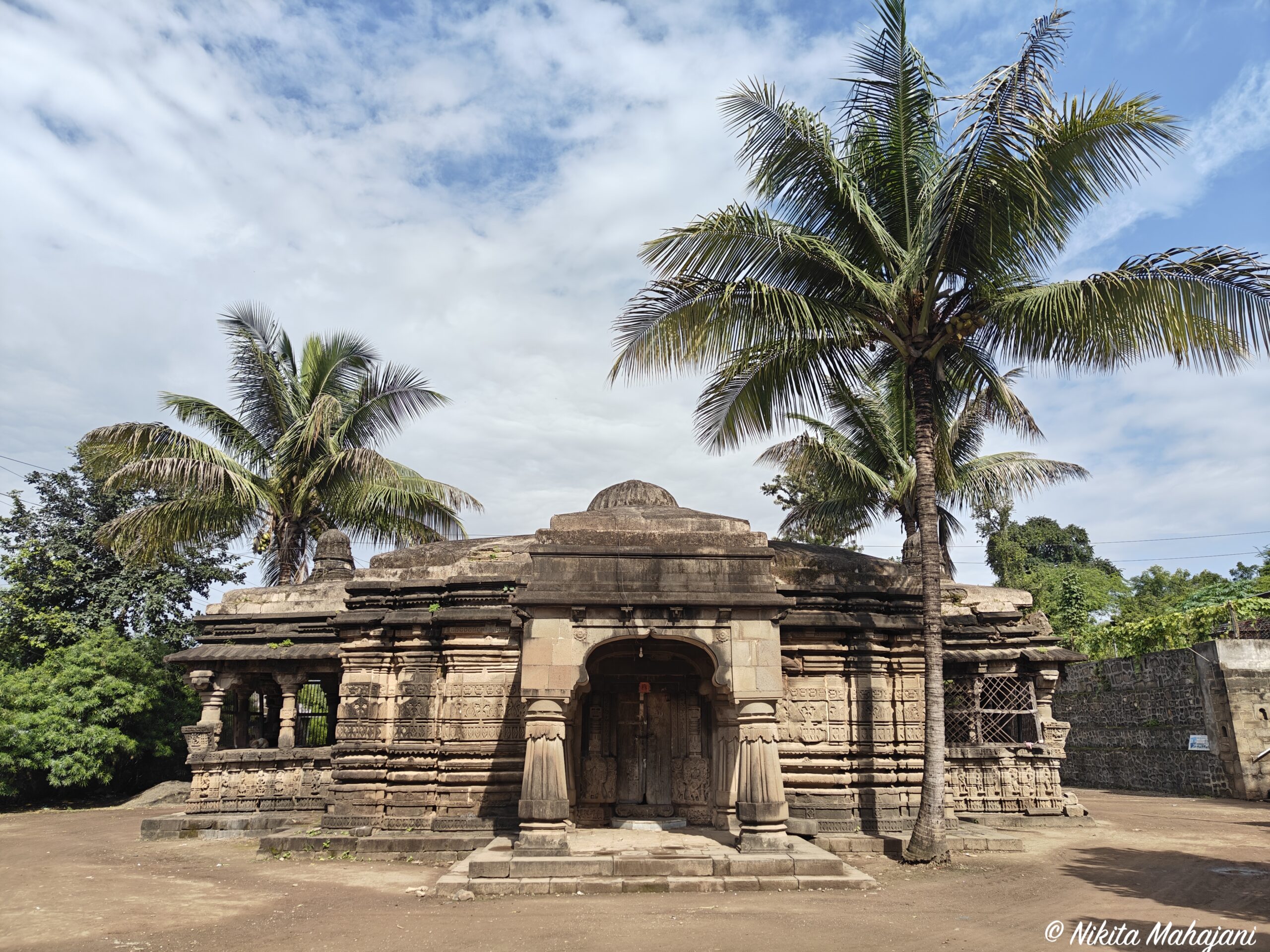
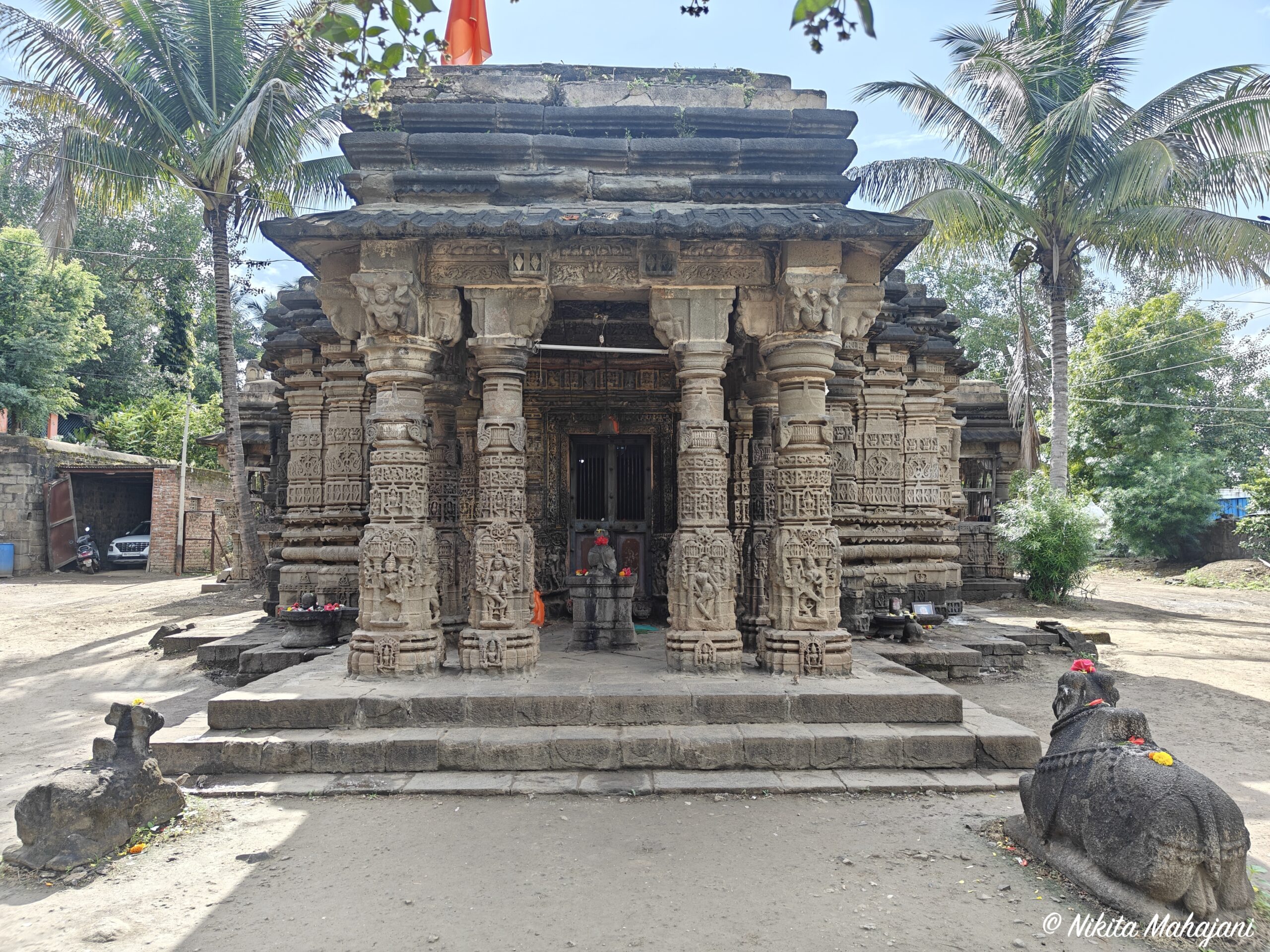
The defacement of the sculptures clearly indicates that systematic Islamic iconoclasm took place here, as previously noted. The sacred goose motif appears both on the rear porch and the pillars. The intricately carved architrave forming the first course of the central hall beneath the central dome is a remarkable sight. Among the four sides, two showcase battle scenes, while the third portrays Vishnu reclining on the Seshanag, accompanied by nagas on either side. These nagas are depicted as half-human, half-serpent beings, shown squatting on their coiled tails.
There are a few veergals or hero-stones in the complex too. Interestingly, the temple does not fall under the jurisdiction of any central or state legislative authority and remains the private property of the Pethkar family, whose members also serve as priests. Notably, they have done an exceptional job in preserving the temple and its surroundings, which also include smaller shrines dedicated to Lord Ram and Goddess Bhavani.
Sophie enjoyed the spacious grounds, exploring every nook and cranny. Siddheshwar temple is completely pet friendly. Infact there are two indie dogs who are permanent residents of the temple. There is space available for parking 3-4 cars. However, very few vistors are seen at this temple.
We left from Akole towards Rtanawadi to visit the Amruteshwar temple. The route is full of waterfalls. The nearby Umbrella Waterfall added a magical touch to the place, with water cascading down, creating a peaceful ambiance that Sophie enjoyed as well. The road to Ratanwadi temple is not in a good condition at all. It is advisable to by a car having a lot of ground clearance.
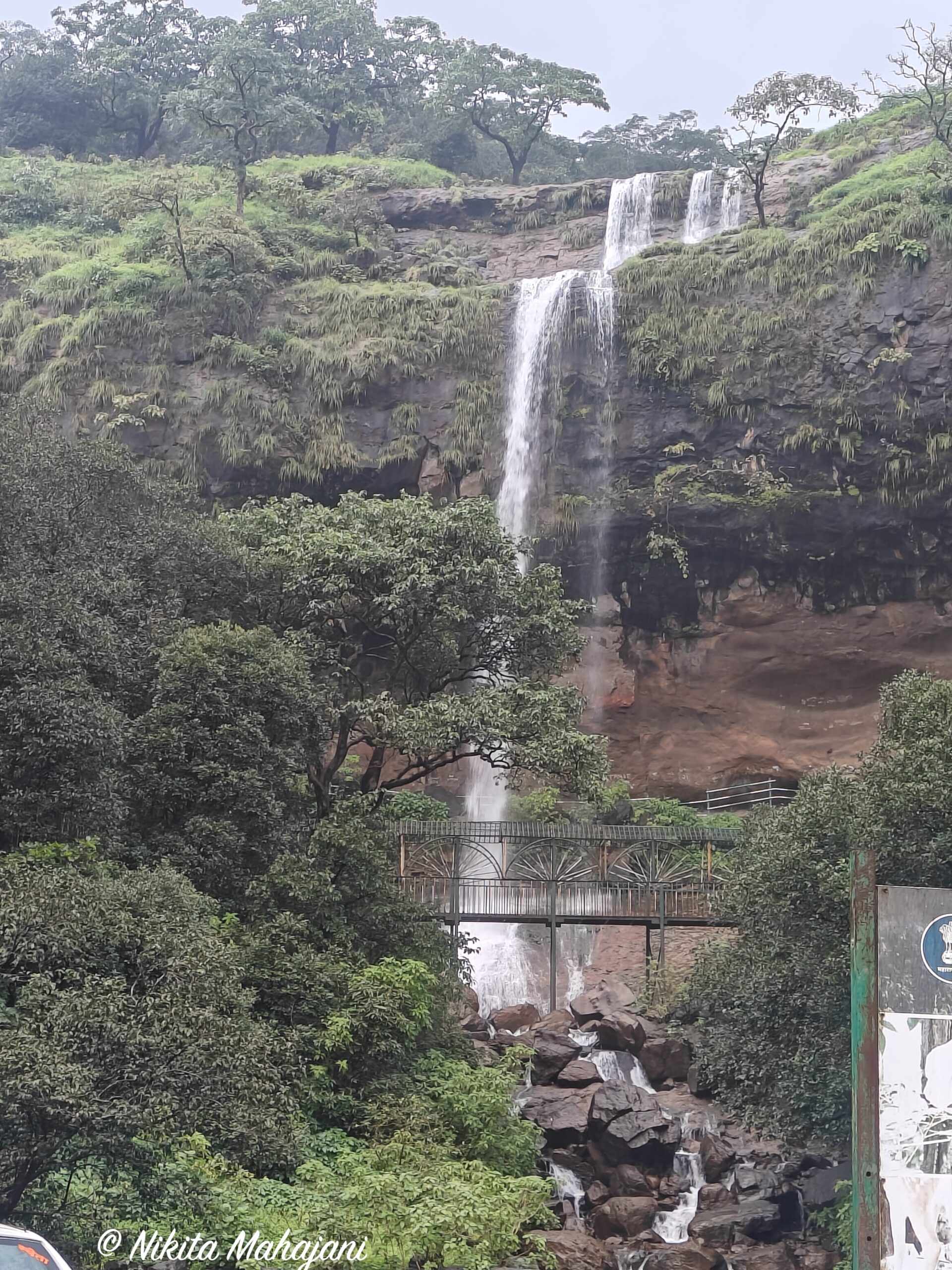
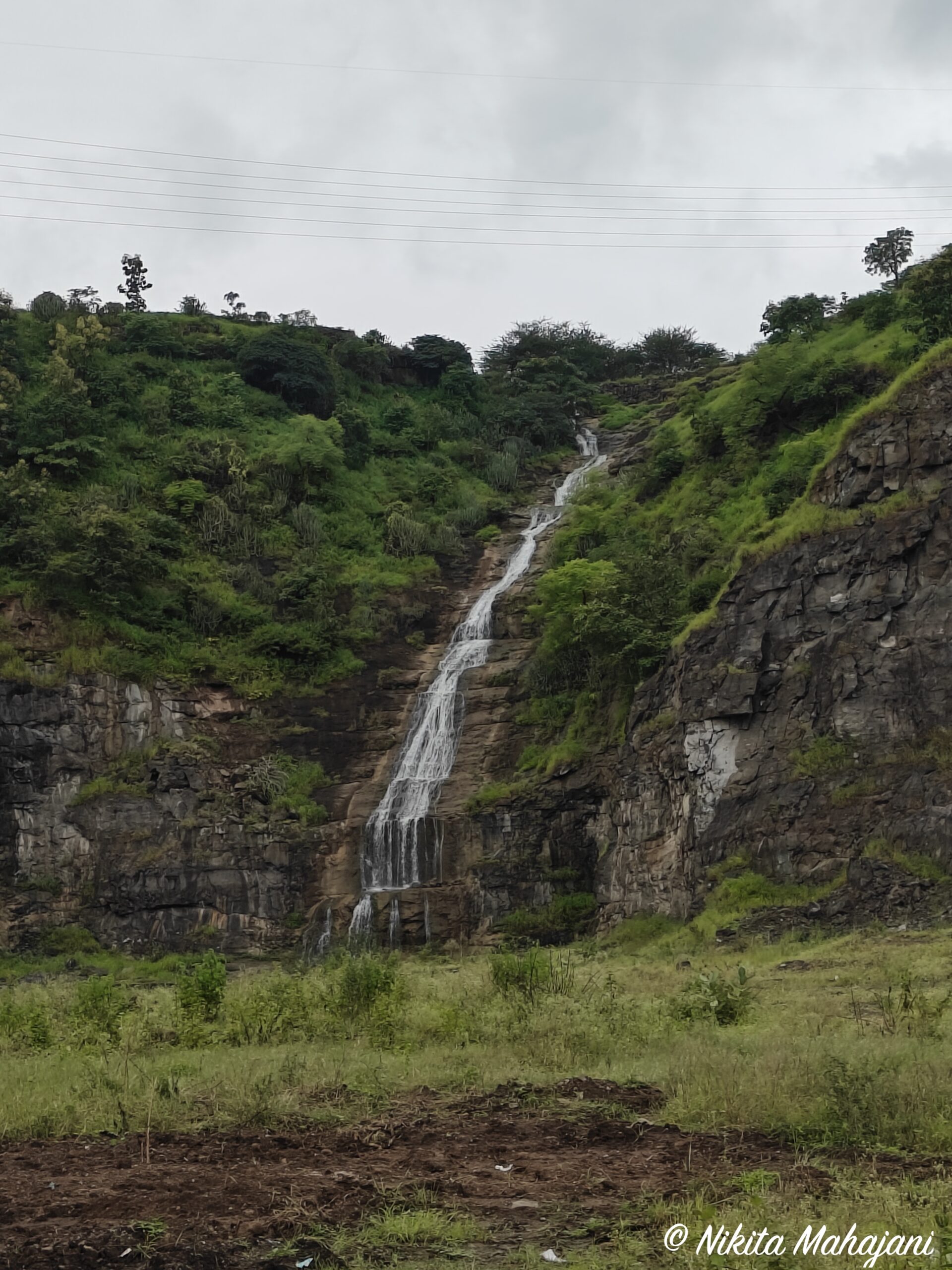
After a peaceful stop, we continued our drive through winding roads until we reached Shree Amruteshwar Temple. Parking, washrooms and eateries are available outside the temple. There is no network in this area. So make sure to carry enough cash. Since it was raining, we could spend very less time in the temple.
The Amruteshwar Temple is an ancient shrine built in the 9th century by King Jhanj of the Shilahar dynasty. Located in Ratanwadi village, the base village for the renowned Ratangad Fort, this temple is dedicated to Lord Shiva and is approximately 1,200 years old. Constructed primarily from black stone, the temple also features red stone elements. The walls and ceiling are adorned with intricate murals, showcasing remarkable craftsmanship. A mandapa supported by 12 beautifully carved pillars, decorated with statues and floral motifs, enhances the temple’s architectural splendor. The temple houses a Shivling, beneath which lies a hot water spring. During the monsoon, the temple’s reflection in the surrounding pond creates a breathtaking sight.
The Amruteshwar Temple is open 24 hours a day. We enjoyed steaming hot tea and some snacks at one the shacks outside the temple. These shacks are pet friendly and they have clean washrooms.
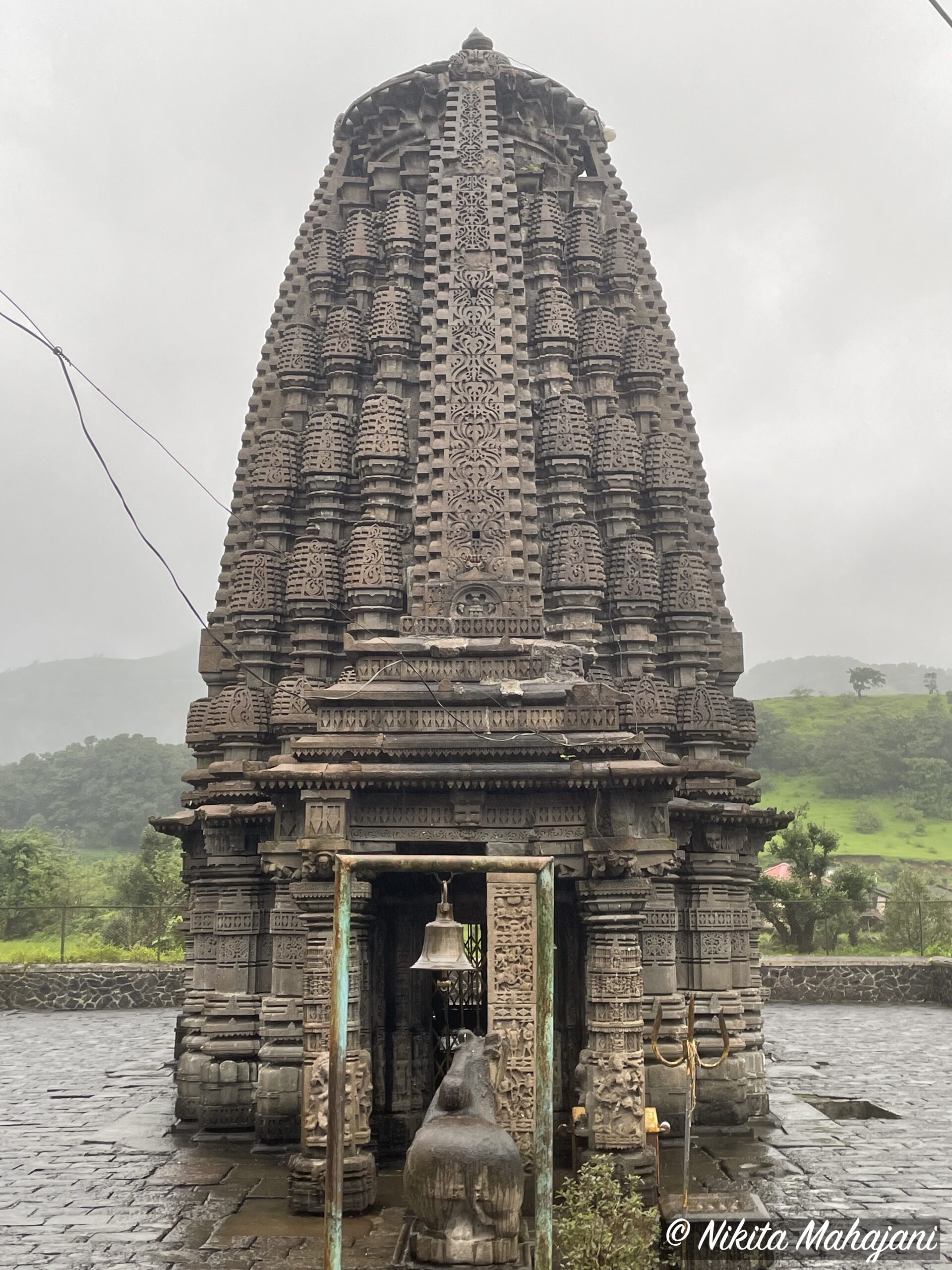
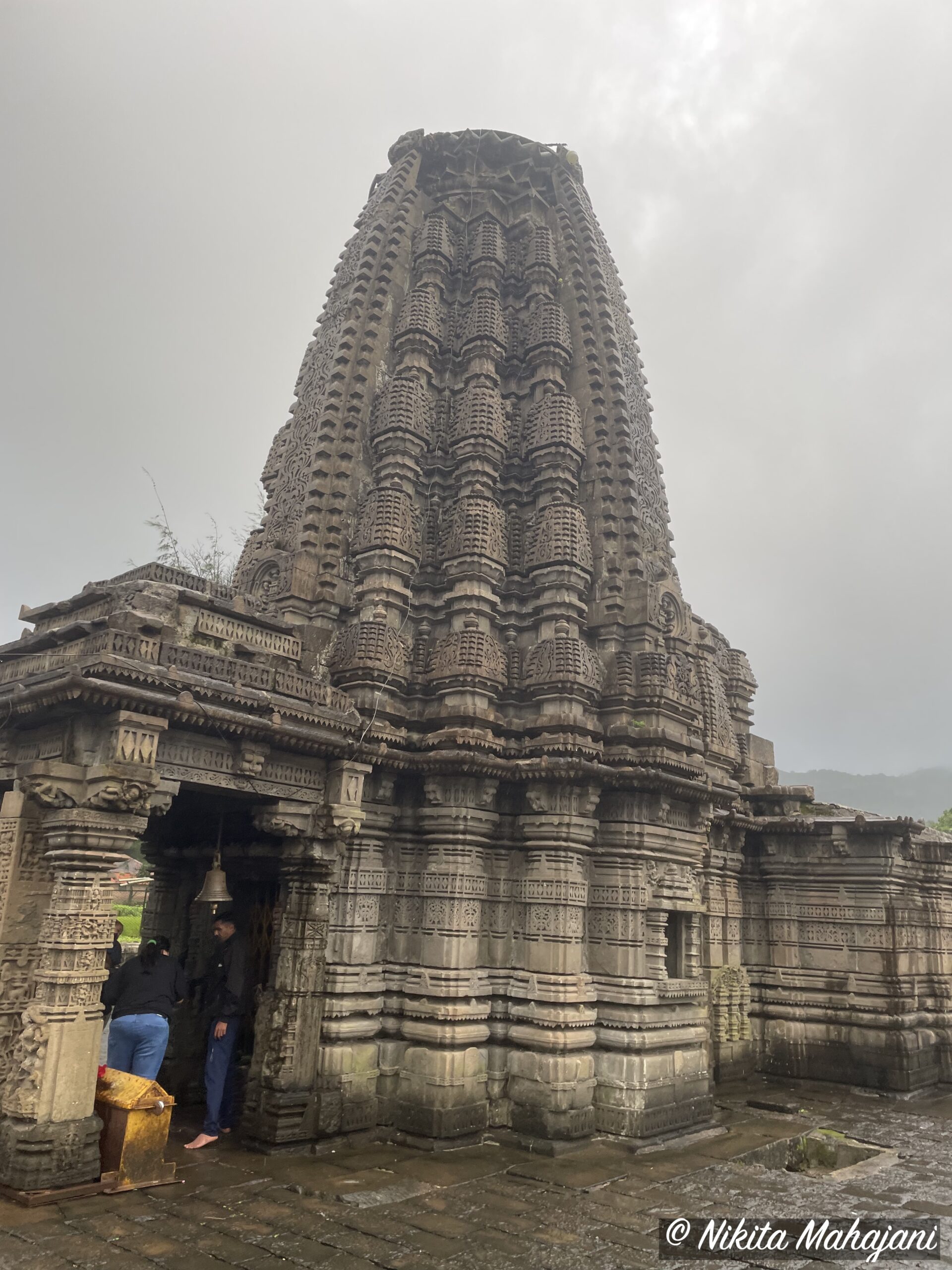
By evening, we made our way to Green Heritage Resort, where a warm dinner awaited us. I booked this place for a week of relaxation before heading to Bhandardara. Overall, the stay was pleasant, with spacious and clean rooms in a well-situated location. The food was decent—not exceptional, but certainly not bad. The staff provided football and cricket equipment for outdoor games, along with indoor options like Jenga and Ludo. The swimming pool was well-maintained and open until 10 PM, which was a great perk. This place is ideal for a relaxing and enjoyable getaway with family and friends. Its location on the outskirts of Igatpuri adds to its charm, offering a peaceful retreat.The staff were welcoming, and the resort’s pet-friendly vibe made us feel right at home. Sophie settled into her cozy corner, while we reminisced about the day over a delicious meal.
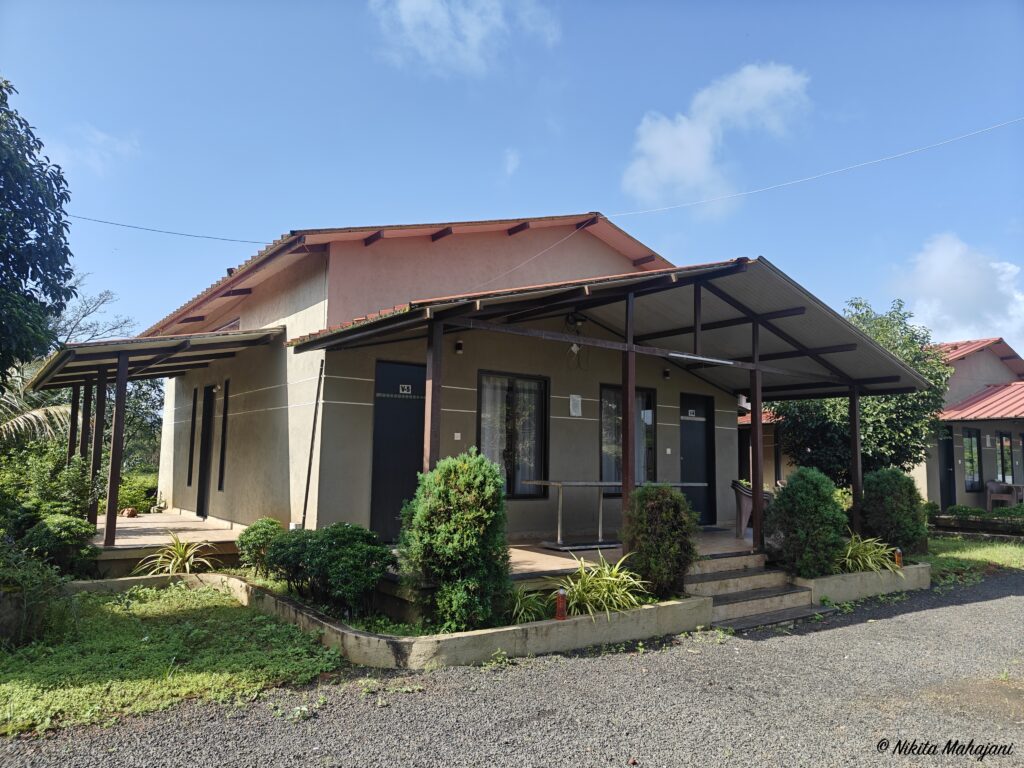
To read the blog on day 2 of Igatpuri click here
Where did we stay ?
Hotel Nest Beacon , Daman.
Green Heritage Resort, Igatpuri
Where did we eat ?
Hotel Shivneri Misal in Manchar
Prakriti Agro Farm, Jawhar
Envairoh, Daman
